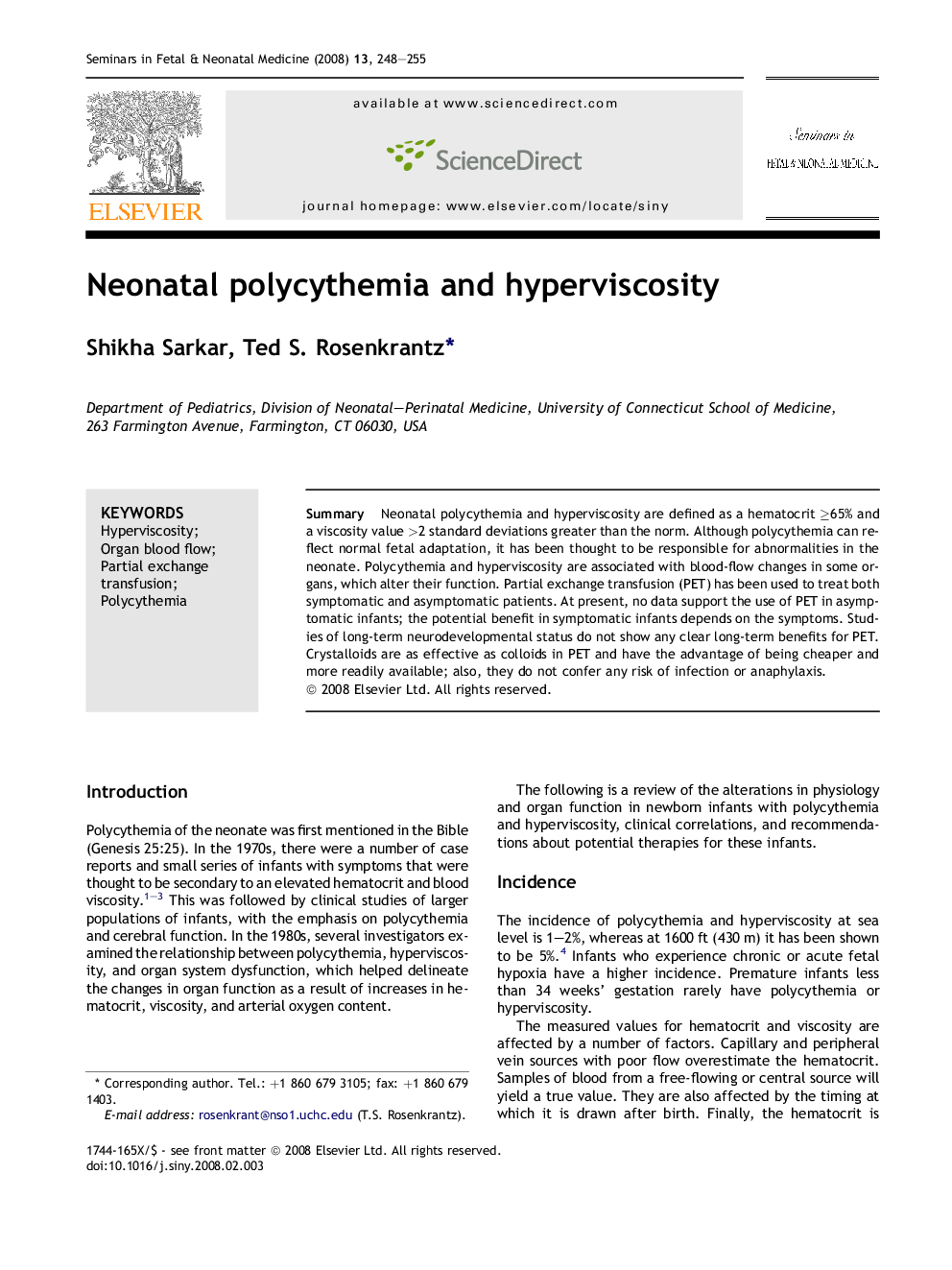| Article ID | Journal | Published Year | Pages | File Type |
|---|---|---|---|---|
| 3974483 | Seminars in Fetal and Neonatal Medicine | 2008 | 8 Pages |
SummaryNeonatal polycythemia and hyperviscosity are defined as a hematocrit ≥65% and a viscosity value >2 standard deviations greater than the norm. Although polycythemia can reflect normal fetal adaptation, it has been thought to be responsible for abnormalities in the neonate. Polycythemia and hyperviscosity are associated with blood-flow changes in some organs, which alter their function. Partial exchange transfusion (PET) has been used to treat both symptomatic and asymptomatic patients. At present, no data support the use of PET in asymptomatic infants; the potential benefit in symptomatic infants depends on the symptoms. Studies of long-term neurodevelopmental status do not show any clear long-term benefits for PET. Crystalloids are as effective as colloids in PET and have the advantage of being cheaper and more readily available; also, they do not confer any risk of infection or anaphylaxis.
